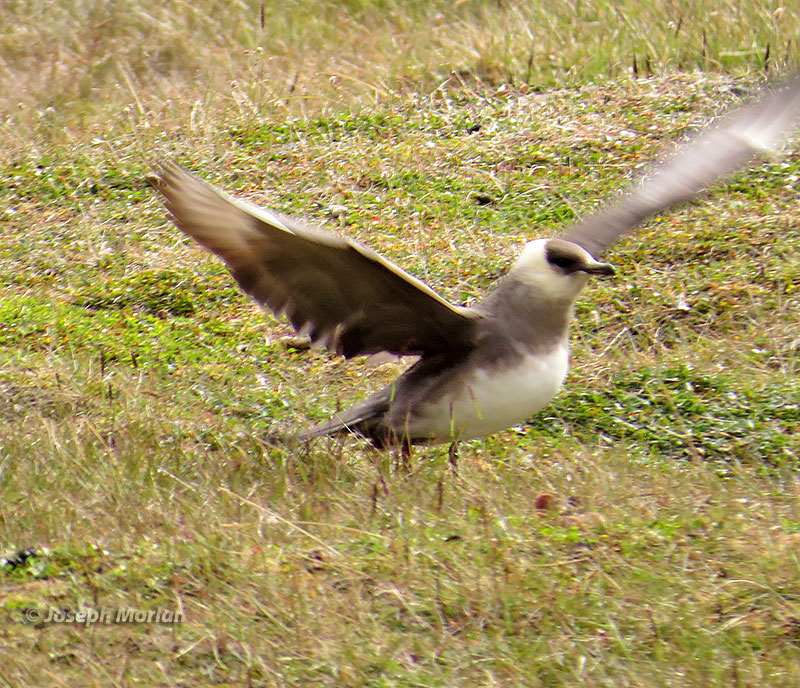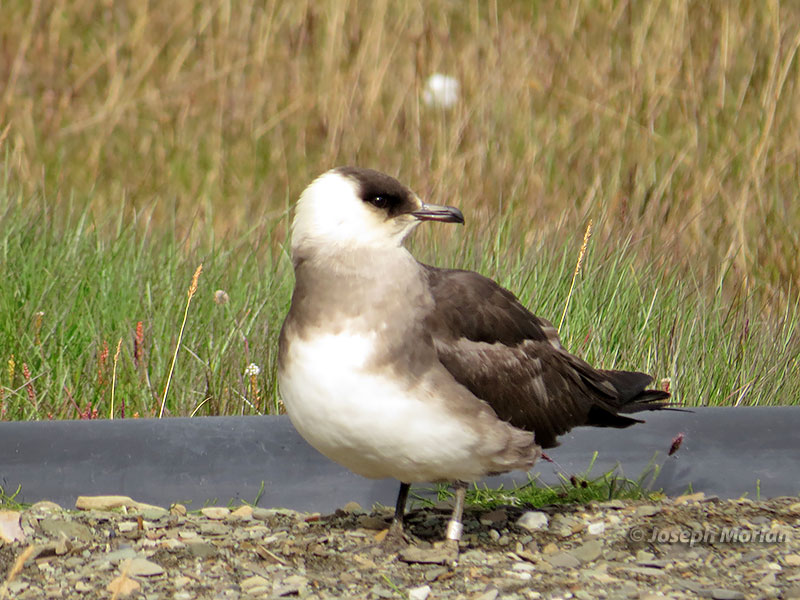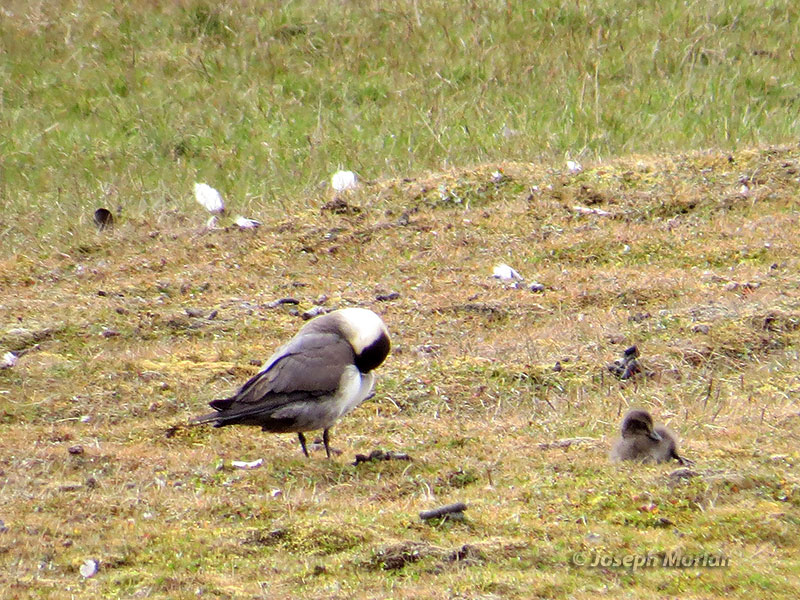


Jaegers are kleptoparasites, obtaining much of their food by stealing it from other birds. This species sometimes goes under the name, "Arctic Skua." It is highly variable, occurring in dark, light and intermediate morphs. This is an adult light morph in breeding plumage. In the North Atlantic, light morphs predominate at higher latitudes. In Svalbard, the dark morph is extremely rare comprising less than 1% of the population while in southern Norway and the Baltic Sea, over 95% are dark. The genetic basis of the polymorphism is more complex than previously believed. It involves three different linked non-synonymous mutations at the plumage color locus rather than just the single mutation previously known (Janssen & Mundy 2013). Canon SX50 HS PowerShot
References:
Furness, R.W., Boesman, P. & Garcia, E.F.J. (2018). Arctic Jaeger (Stercorarius parasiticus). In: del Hoyo, J., Elliott, A., Sargatal, J., Christie, D.A. & de Juana, E. (eds.). Handbook of the Birds of the World Alive. Lynx Edicions, Barcelona. (retrieved from https://www.hbw.com/node/53959 on 3 September 2018).
Janssen, K. and Mundy, N. I. (2013), Molecular population genetics of the melanic plumage polymorphism in Arctic skuas (Stercorarius parasiticus): evidence for divergent selection on plumage colour. Mol Ecol, 22: 4634-4643. doi:10.1111/mec.12428
Wiley, R. H. and D. S. Lee (1999). Parasitic Jaeger (Stercorarius parasiticus), version 2.0. In The Birds of North America (A. F. Poole and F. B. Gill, Editors). Cornell Lab of Ornithology, Ithaca, NY, USA. https://doi.org/10.2173/bna.445